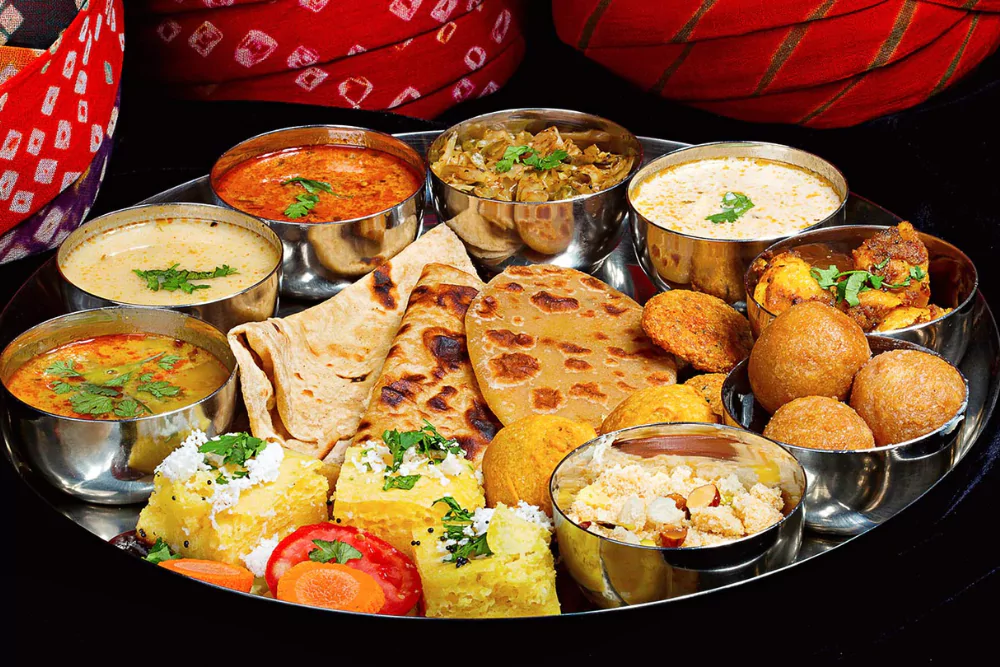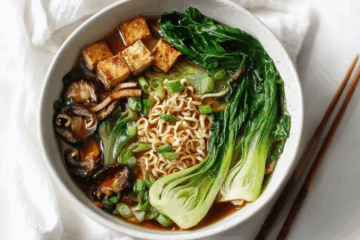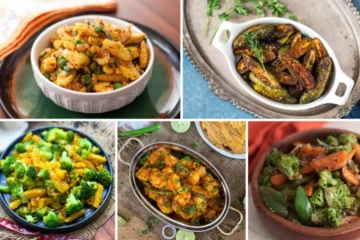What are the unique benefits of using hing in Rajasthani dishes?
Short Summary: Hing aids in digestion, reduces bloating, and adds a unique, pungent flavor to Rajasthani dishes.
Long Answer:
- Digestive Aid: Hing is known for its carminative properties, making it effective in reducing gas and bloating.
- Anti-inflammatory: It has anti-inflammatory properties that help soothe digestive tracts and reduce discomfort.
- Flavor Enhancer: Hing imparts a distinctive, pungent aroma that enhances the overall taste of the dishes.
- Health Benefits: It helps in reducing blood pressure and has antioxidant properties.
In Rajasthani cuisine, hing is a staple that not only enhances flavor but also offers significant health benefits. Its potent aroma and pungent taste are prized for adding depth to dishes. Hing aids in digestion, making it an essential ingredient for the region’s rich and hearty meals. Its anti-inflammatory and antioxidant properties contribute to overall wellness, making hing a valuable component of traditional Rajasthani cooking.
How does hing enhance the flavors of traditional Rajasthani recipes?
Short Summary: Hing enhances flavors by adding a unique, pungent aroma, making dishes more flavorful and aromatic.
Long Answer:
- Aromatic Quality: Hing imparts a strong, unique aroma that enriches the flavor profile of dishes.
- Flavor Depth: It adds a layer of pungency, enhancing the overall taste and complexity of recipes.
- Balances Rich Ingredients: Hing helps balance the richness of ghee and spices, providing a harmonious blend.
- Versatile Use: It is versatile and can be used in both vegetarian and non-vegetarian dishes.
Traditional Rajasthani recipes are known for their robust flavors and rich ingredients. Hing plays a crucial role in enhancing these flavors by imparting a distinctive, pungent aroma. This unique quality of hing elevates the overall taste, making dishes more aromatic and flavorful. Additionally, hing balances the richness of ghee and other spices, creating a harmonious blend that is quintessential to Rajasthani cuisine. Its versatility allows it to be used in a variety of dishes, from dals to curries, further enriching the culinary experience.
Can you share some popular Rajasthani recipes that incorporate hing?
Short Summary: Popular Rajasthani recipes with hing include Dal Baati Churma, Gatte ki Sabzi, and Ker Sangri.
Long Answer:
- Dal Baati Churma: A traditional dish where hing is used in the dal to add a unique flavor.
- Gatte ki Sabzi: Gram flour dumplings cooked in a spicy yogurt-based curry, where hing adds depth to the gravy.
- Ker Sangri: A dried bean and berry dish, with hing enhancing the tangy and spicy flavors.
Rajasthani cuisine boasts a variety of dishes that incorporate hing to enhance their flavor. Dal Baati Churma, a quintessential Rajasthani dish, uses hing in the dal to add a unique taste. Gatte ki Sabzi, made with gram flour dumplings in a spicy yogurt-based curry, benefits from the depth of flavor that hing provides. Ker Sangri, a dish made with dried beans and berries, is another example where hing enhances the tangy and spicy notes. These recipes showcase the versatility and flavor-enhancing properties of hing in Rajasthani cooking.
What is the best way to use and store hing to maintain its freshness and flavor?
Short Summary: Store hing in an airtight container in a cool, dark place, and use it sparingly to maintain its pungent flavor.
Long Answer:
- Storage: Keep hing in an airtight container to preserve its potent aroma and flavor.
- Environment: Store it in a cool, dark place to prevent exposure to light and moisture.
- Usage: Use hing sparingly, as its strong flavor can be overpowering if used in excess.
- Grinding: Grind hing with a bit of salt or wheat flour to make it easier to use.
To maintain the freshness and flavor of hing, it is essential to store it properly. Hing should be kept in an airtight container to preserve its potent aroma and flavor. Storing it in a cool, dark place helps prevent exposure to light and moisture, which can degrade its quality. When using hing, it is important to use it sparingly, as its strong flavor can easily overpower a dish. Grinding hing with a bit of salt or wheat flour can make it easier to measure and incorporate into recipes. By following these storage and usage tips, you can ensure that your hing remains fresh and flavorful.
Are there any tips for balancing hing with other spices in Rajasthani cooking?
Short Summary: Balance hing with other spices by using it sparingly, pairing it with aromatic spices, and adjusting quantities based on dish complexity.
Long Answer:
- Use Sparingly: Hing is potent, so a small pinch is usually sufficient to achieve the desired flavor.
- Pair with Aromatic Spices: Combine hing with aromatic spices like cumin, coriander, and fennel to create a balanced flavor profile.
- Adjust Quantities: Adjust the quantity of hing based on the complexity of the dish and the other spices used.
- Timing: Add hing at the beginning of cooking to allow its flavor to infuse throughout the dish.
Balancing hing with other spices in Rajasthani cooking requires a delicate touch. Given its potency, it is essential to use hing sparingly—a small pinch is often enough to achieve the desired flavor. Pairing hing with aromatic spices such as cumin, coriander, and fennel can create a well-rounded and balanced flavor profile. The quantity of hing used should be adjusted based on the complexity of the dish and the other spices involved. Adding hing at the beginning of the cooking process allows its flavor to infuse and blend with the other ingredients, resulting in a harmonious and flavorful dish.
Conclusion
Hing, or asafoetida, plays an indispensable role in Rajasthani cooking, adding a unique, pungent flavor that elevates traditional recipes. From aiding digestion to enhancing the overall taste of dishes, hing offers numerous benefits. By incorporating hing into popular Rajasthani dishes and following proper storage and usage tips, you can enjoy its distinctive taste and health benefits. Whether you are preparing Dal Baati Churma, Gatte ki Sabzi, or Ker Sangri, hing is the secret ingredient that brings Rajasthani cuisine to life. Balancing hing with other spices ensures that your dishes are flavorful and aromatic, making it a must-have in your kitchen.





